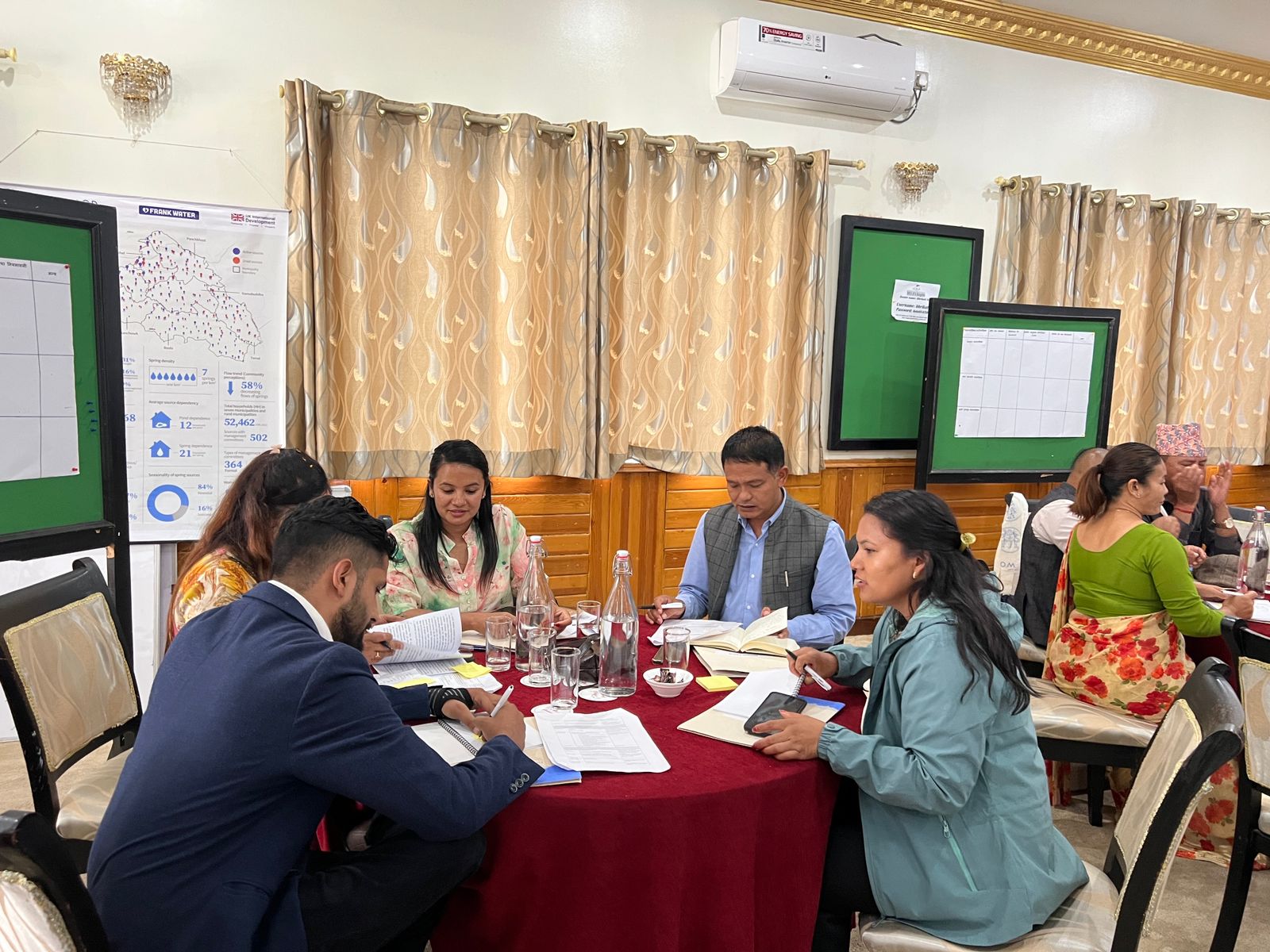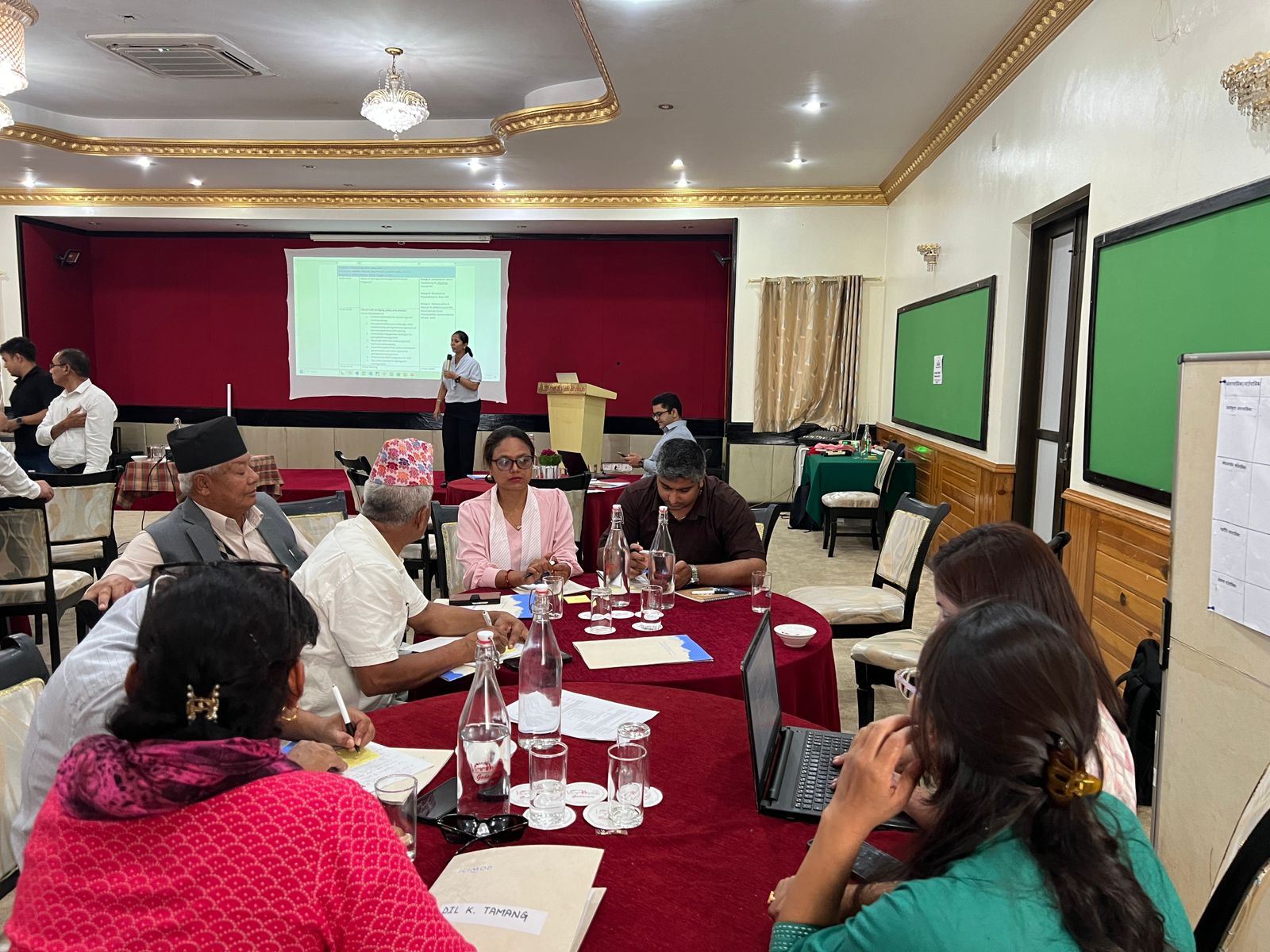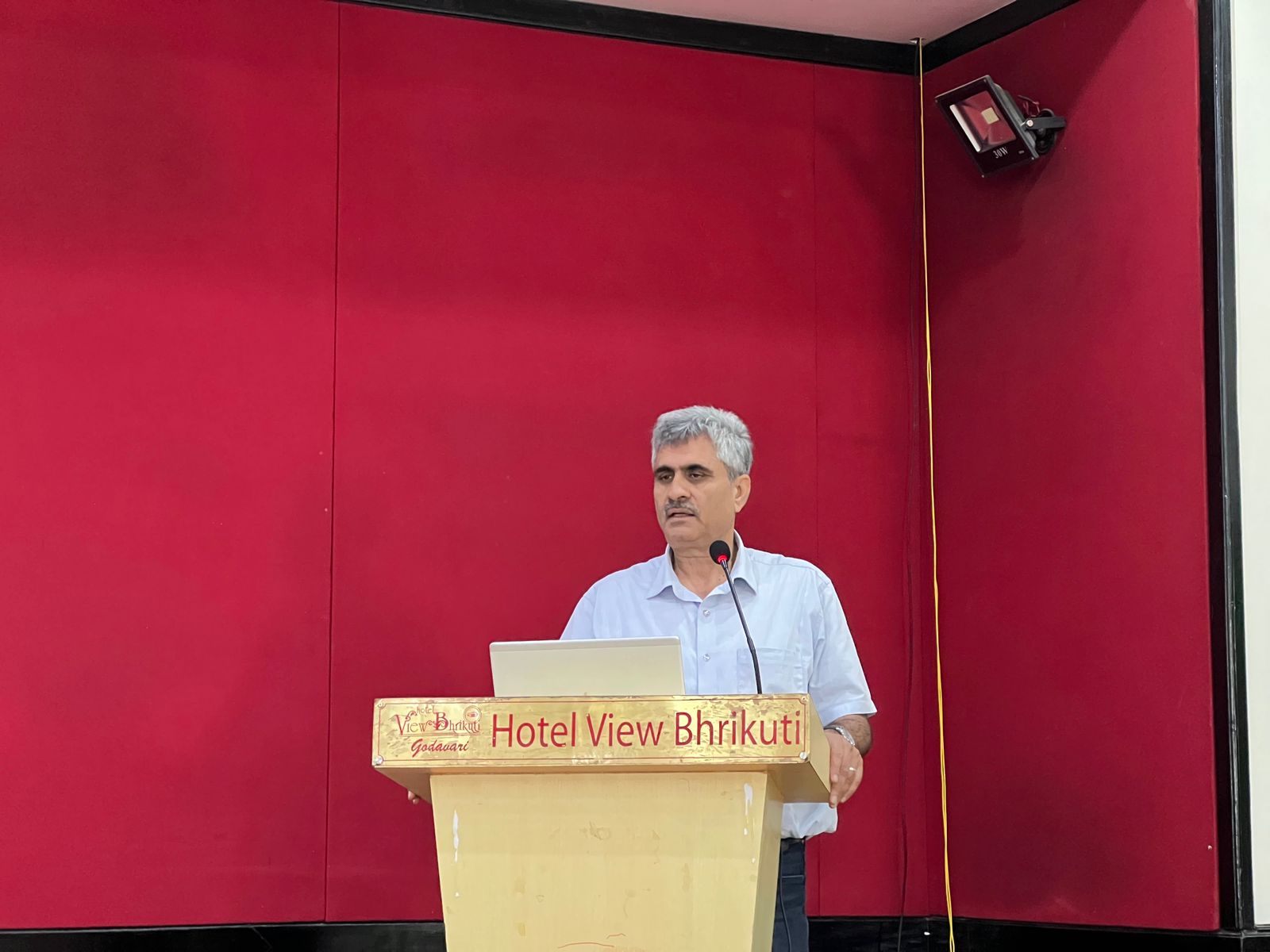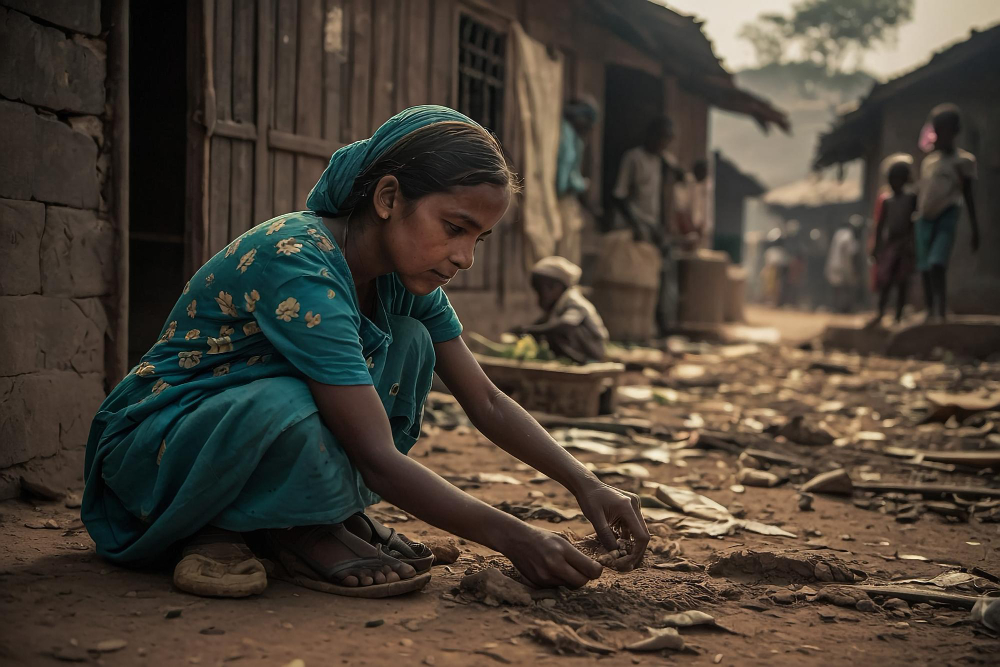A two-day workshop by ICIMOD brought together important stakeholders to address drying of Nepal’s springsheds. The event focused on developing a nationwide roadmap for springshed management and conservation.

July 23, 2025
Godawari, Lalitpur

Attendees participate in the plenary session on springshed management at Hotel View Bhrikuti, Lalitpur on July 21, 2025. Credits: DevPulse/ Sakshyam Bhandari
As nearly one-third of Nepal’s freshwater springs dry up, experts, policymakers, and local governments gathered in Godawari, Lalitpur, this week to develop a roadmap for springshed revival. The two-day workshop, held on July 21 and 22, 2025, and organized by the International Center for Integrated Mountain Development (ICIMOD) highlighted the urgency of protecting spring-fed systems that millions across Nepal rely on for water, livelihoods, and climate resilience.
The event brought together representatives from the Government of Nepal, municipal leaders, technical experts, and international partners and other ICIMOD representatives to address this very critical issue of drying springsheds in Nepal.
“About 30% of Nepal’s springs have already dried up, and the quality of the remaining spring-fed water is rapidly declining,” said Sanjeev Bhuchar, Senior Intervention Manager at ICIMOD. He emphasized that the organization’s six-step protocol for springshed management, now being piloted in multiple locations, offers scalable solutions.
Anju Pandit, Springshed Management Analyst, shared how municipalities like Namobuddha and Dhankuta are now integrating springshed conservation into their local development plans.
Buchar further also mentioned a Letter of Intent has been signed between ICIMOD and seven municipalities of Kavre, agreeing to collaborate on policy formulation, fund leveraging, and scaling up springshed management at the local level.

Sanjeev Bhuchar, Senior Intervention Manager at ICIMOD, delivers closing remarks during the springshed conservation workshop at Hotel View Bhrikuti, Lalitpur on July 22, 2025. Credits: DevPulse/ Sakshyam Bhandari
While scientific protocols and funding strategies were front and center, discussions also underlined the social and environmental drivers of spring depletion — from erratic rainfall and climate change to unchecked groundwater extraction, landslides, and infrastructure development in the Chure region.
Ngamindra Dahal, Chair of Nepal Water, warned that in vulnerable geographies like Chure, springs are drying faster than anticipated.
In a separate interview, he emphasized that springs remain a lifeline for many communities and warned about the consequences of unsustainable groundwater extraction. Dahal urged communities to practice rainwater harvesting and better water management, citing Dhulikhel as a successful example of technical support.
Beyond technical fixes, participants emphasized the importance of inclusive and gender-sensitive approaches. ICIMOD’s GESI Lead Shiba Satyal Baskota highlighted how water scarcity disproportionately affects women and marginalized groups, underscoring the need for gender-responsive budgeting and stakeholder mapping in springshed management.
Similarly, Bhagawan Adhikari, Chair of Bethanchok Rural Municipality, spoke to us about how ICIMOD’s technical support helped map and begin the revival of critical springs in his area. He pointed to budget constraints as a barrier but emphasized that community involvement has been key to progress.
The workshop also bridged environmental conservation with disaster risk reduction (DRR). Saswata Sanyal, DRR Lead at ICIMOD, argued for integrating springshed planning into DRR frameworks, noting that proactive governance, budgeting, and local ownership are critical for “building back better.” Echoing this, Shailendra Sakya presented the success of community-based flood early warning systems, underscoring local agency partnerships and sustainability.
On the final day, participants visited ICIMOD Living Mountain Lab, an experiential learning site showcasing eco-friendly technologies for water conservation and resource management.

Bhagawan Adhikari, Chair of Bethanchok Rural Municipality (Kavre), participates in a field visit at ICIMOD’s Living Mountain Lab on July 22, 2025. Credits: DevPulse/ Sakshyam Bhandari
This hands-on experience provided valuable knowledge on innovative and eco-friendly solutions, strengthening the commitment to integrated and sustainable springshed management across Nepal.
The workshop concluded with a shared understanding: springshed management is not just a technical issue but a multi-dimensional development priority. Coordinated action—backed by strong policy, inclusive planning, and behavioral change—will be essential to conserve Nepal’s springs for future generations.
“In Hindu Kush Himalayan (HKH) region, over 50% of freshwater springs have dried or their discharge has reduced.” Bhuchar reflected during the closing session. “If we fail to act decisively, the impact on food security, public health, and community stability will be irreversible.”
The two-day event was organised under ICIMOD’s Himalayan Resilience Enabling Action Programme (HI-REAP) and HI-GRID initiative, with support from the United Kingdom International Development and the Australian Government.

By sharing valuable information and sparking inspiration, we aim to foster growth, innovation and brighter opportunities for future generations.
Contact us